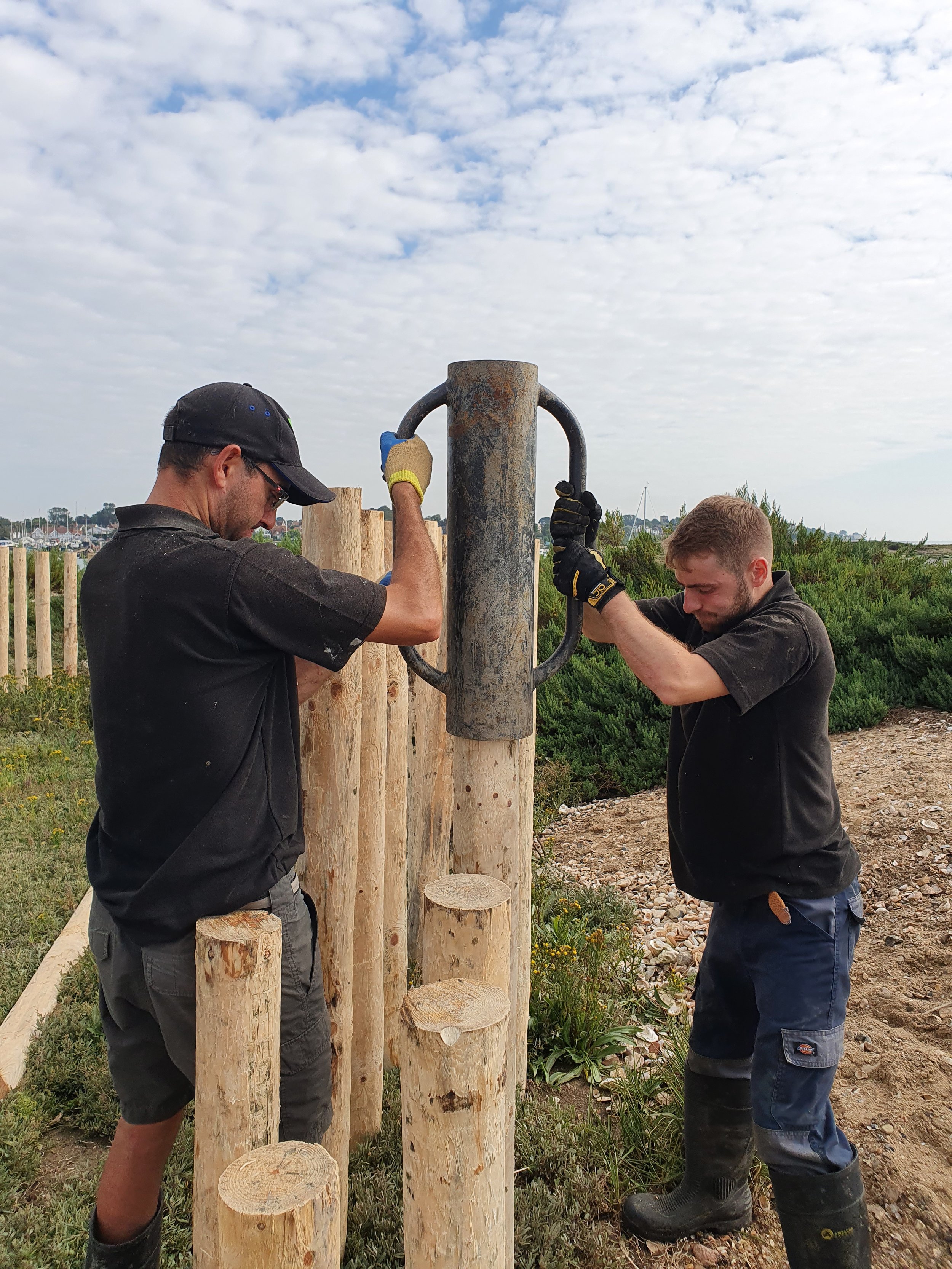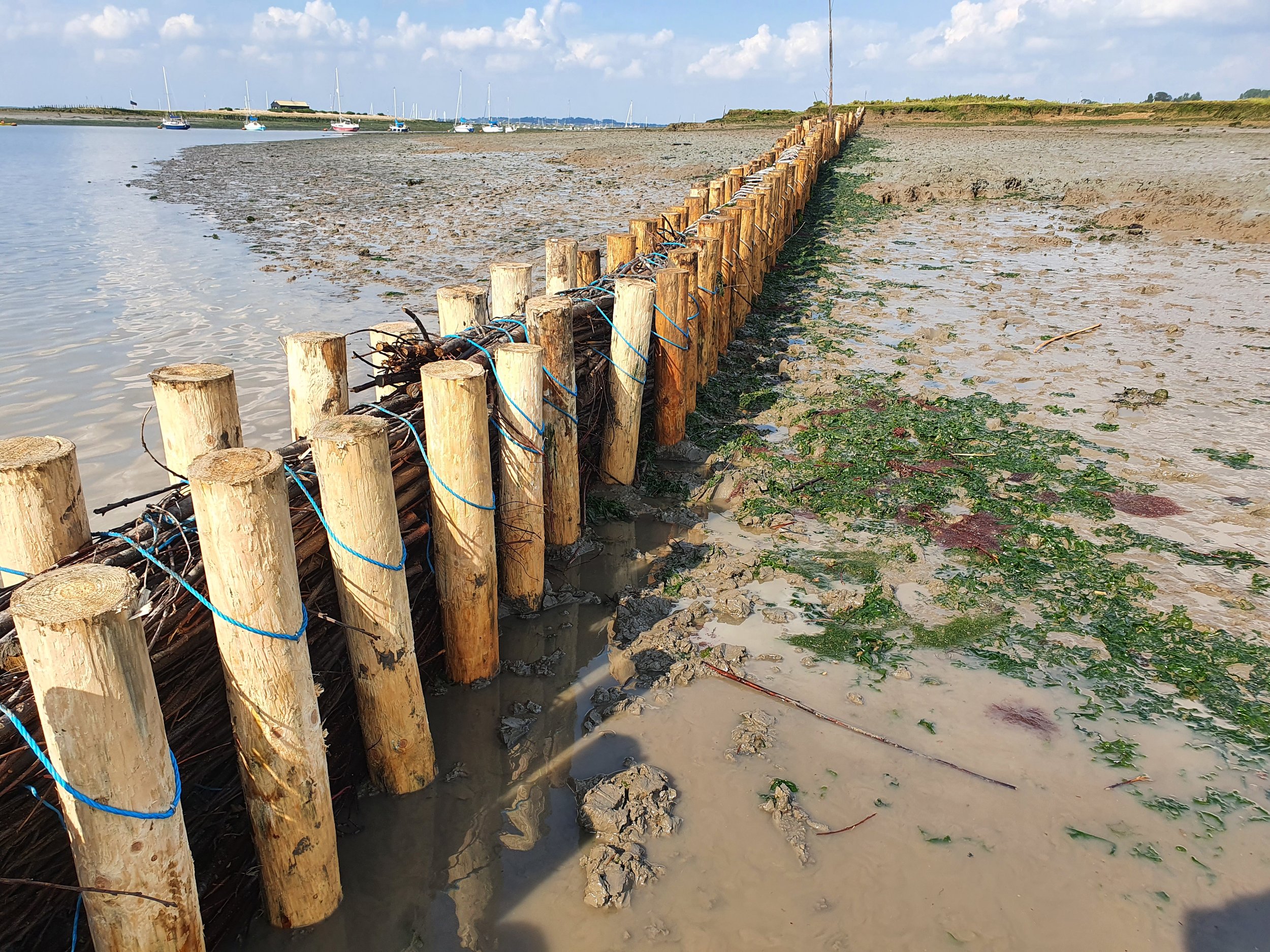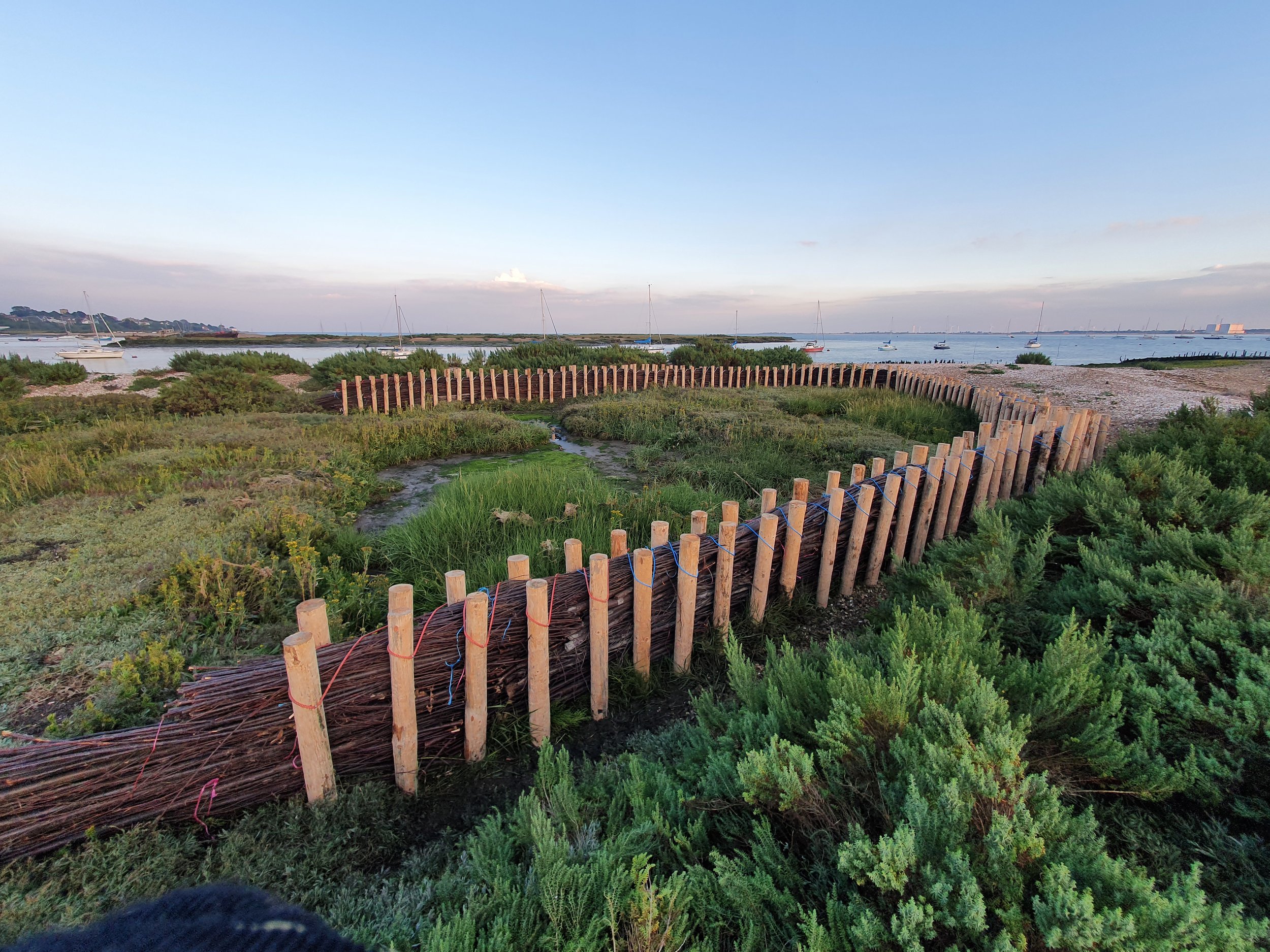Brushwood Installation to Protect the Saltmarsh on Packing Marsh & Cobmarsh
Last week, part of the Exo team were out onsite installing brushwood coastal defences on Cobmarsh island and Packing shed island in the West Mersea channel approaches, in Essex.
The work forms part of a wider scheme of nature-based solutions and utilising natural processes for low-cost sea defence. The Mersea Harbour Protection Trust employed Exo based on our explicit experience of brushwood work and working with nature projects, such as USAR and SARCC https://www.sarcc.eu.
As part of the work, William, Izaak and two subcontractors installed over 100m of brushwood on Cobmarsh island over two days and 44m on Packing shed in 1 day.
The work is physically exhausting, with each post and brushwood bundle weighing up to 15 and 30kg each! Add in the energy-sapping mud and you have some extreme conditions! However, our experience of working in these challenging environments meant we were well prepared.
We utilised our shallow draft modular pontoon and 15ft dell quay dory to transport the materials to the site and scheduled the works so the tide helped us with access and material movements. Understanding the tide and a bit of luck in weather conditions, made for a smooth operation.
The process of installation firstly involves using a post rammer to push the untreated wooden posts to the correct depth. After this, the brushwood bundles are laid in and finally tied off to the posts.
Conventionally brushwood fences (polders) act as an energy dampener, slowing the erosive flow of tides and waves, creating ideal conditions for suspended sediment deposition and thus vertical elevation increase, creating a natural flexible defence against sea-level rise. The new substrate also creates ideal successionist conditions for pioneer floral colonisation of rare halophytic saltmarsh plants.
In this particular project, the brushwood is aimed to trap and control the movement of dredged sand and gravel, which will be placed there as part of beneficial use of dredged material, to recharge areas lost to erosion. This function is crucial, as without the brushwood the prevailing wind and tide would entrain the sand and cover vulnerable and special saltmarsh habitats.
By the end of the project, we were all tired but very proud of what we had achieved in a short amount of time, and this was made better by the positive responses we received from the local community for helping to protect this unique habitat.
We would like to extend a big thank you to West Mersea Boat Yard and volunteers from the Mersea Harbour Protection Trust who kindly assisted us during the delivery of this project. Extended thanks to Jim Pullen for the great drone footage and Island Arb for helping us with the installation.
If you want to find out more about our research projects or our services we offer, such as bathymetry, consultancy and water sampling, then visit our YouTube channel and Twitter.




